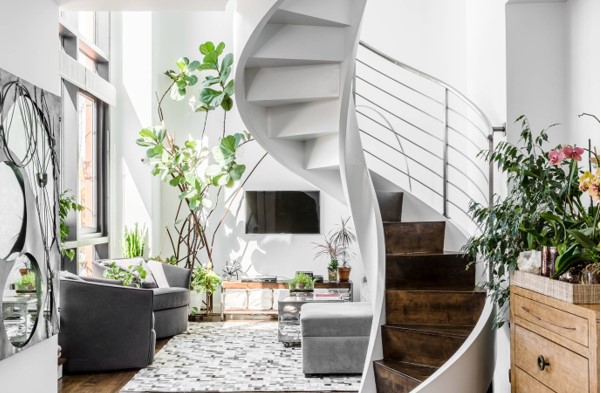Are Spiral Staircases A Good Solution For Small Spaces?

When you're working with limited space, every inch counts. That goes double when it comes to choosing a staircase. Traditional stairs can eat up a surprising amount of floor area, and in compact homes or small apartments, that space is precious. That’s where spiral staircases come in. They don’t just save space—they add a touch of character too. But are they right for your situation? Let’s break it down.
How Spiral Staircases Save Space
Unlike straight or L-shaped stairs, spiral staircases work vertically. They wind around a central post, taking up only a small circle of floor space. You can tuck one into a corner, against a wall, or even in the center of a room without losing too much usable space.
This makes them perfect for lofts, tiny homes, or basement renovations where every foot matters. Instead of devoting half a room to a staircase, you’re getting a stylish solution that keeps the rest of the space open.
Design Flexibility and Aesthetic Appeal
One of the biggest perks of a spiral staircase is its visual impact. They're not just practical—they’re eye-catching. Whether you prefer the warm look of wood, the sleek vibe of steel, or something industrial with exposed hardware, there’s a spiral staircase design to match.
They work just as well in rustic cottages as they do in modern townhomes. You can go bold and sculptural or minimal and clean. And because they stand out, they often become a focal point—making your home feel more designed and intentional, even if it’s on the smaller side.
Practical Considerations and Limitations
Now, spiral staircases aren’t perfect for every situation. They’re compact, but the tight curve can make them less comfortable for some people. If someone in your home has mobility challenges, a spiral might not be the easiest to navigate. Carrying bulky furniture or items up and down can also be a bit of a challenge.
For families with young children or pets, extra care needs to be taken. Not all spiral staircases come with childproof railings, so adding safety gates or tighter balusters might be necessary. But with the right setup, many of these issues can be solved.
Building Code and Safety
Safety should always be a top priority, especially in homes with kids, guests, or aging family members. Spiral staircases are subject to building codes just like any other structure. That includes specific requirements for tread depth, riser height, handrail spacing, and overall diameter.
Working with a professional is key here. They’ll ensure the staircase meets local code and is installed properly so it’s safe to use every day. There are also ways to upgrade safety—like non-slip treads, strong railings, and integrated lighting—to make the staircase more user-friendly.
Ideal Scenarios for Spiral Staircases
Not every home needs a spiral staircase—but there are plenty of situations where it makes perfect sense. Studio apartments, attic lofts, basement suites, or garden-access rooms are all great candidates. They’re also popular for outdoor decks or rooftop access, where space is tight but access is still important.
In homes with a unique architectural style or modern design features, a spiral staircase can bring that "wow" factor while still being practical. It's a rare combination of space-saving and style.
Conclusion: Smart and Stylish—With the Right Planning
So, are spiral staircases a good solution for small spaces? Absolutely—but like anything else, they work best when they’re thoughtfully chosen and properly installed. They save space, bring personality to your home, and can fit a wide range of design styles.
If you’re considering one for your next project and want expert advice on what will work best for your space, Paradigm Stairs Ltd. is a great place to start. They specialize in staircase design and installation, including space-saving spiral solutions that look good and function well. When every inch counts, working with the right team makes all the difference.

